What is heart valve surgery?
Heart valve surgery can repair or replace a damaged valve. Your consultant may recommend valve surgery if your valve problem is causing difficult symptoms, if the valve disease is severe, or if the faulty valve may cause serious and life-threatening complications like heart failure and abnormal heart rhythms.
Treatment to repair or replace a faulty valve can help to reduce uncomfortable symptoms such as fatigue, breathlessness and chest pain. Treatment can also protect your heart health, prevent dangerous complications of heart valve disease and boost your longevity and quality of life.
Our specialist cardiologists and cardiac surgeons can use innovative techniques to treat damaged or diseased heart valves in private patients.
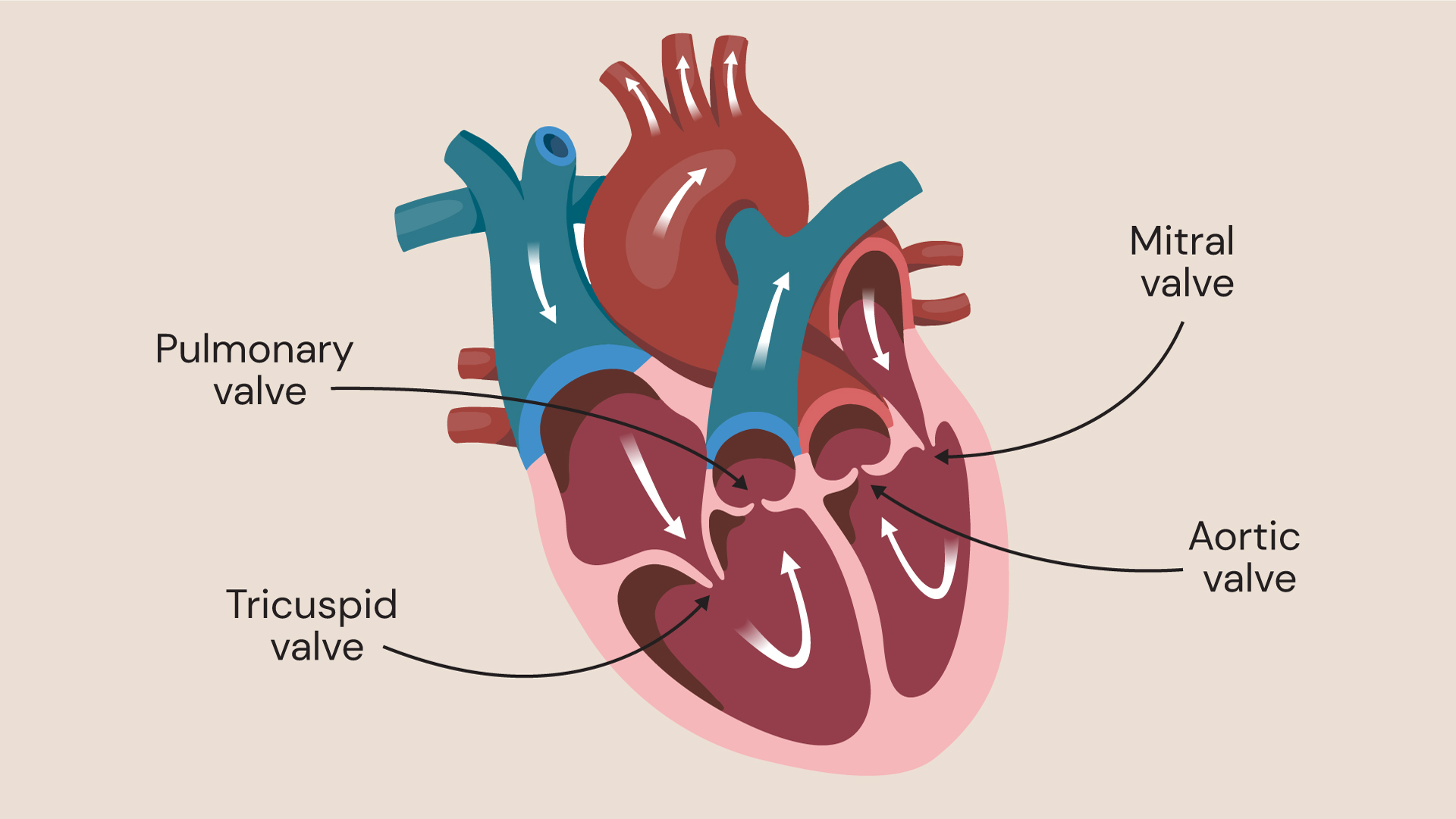
The 4 valves of the heart ensure blood flows in one direction.
The heart has 4 valves, which all work to ensure blood flows correctly through the heart in one direction.
- Aortic valve: The valve on the left side of the heart between the left ventricle (the lower chamber) and the aorta, the big artery that carries oxygen-rich blood to the body.
- Mitral valve: The valve is on the left side of the heart between the left atrium (the upper chamber) and the left ventricle.
- Pulmonary valve: The valve on the right side of the heart between the right ventricle and the pulmonary artery, the blood vessel that carries blood to the lungs to collect and carry oxygen.
- Tricuspid valve: The valve on the right side of the heart between the right atrium and the right ventricle.
Heart valve problems
The heart valves open to allow blood to flow through, then close to ensure it flows in the correct direction and doesn’t leak backwards. Heart valve problems occur when a valve can’t open and close properly:
- Valve stenosis: The valve becomes narrowed and can’t fully open, which restricts blood flow.
- Valve regurgitation: The valve cannot close tightly, allowing blood to leak backwards.
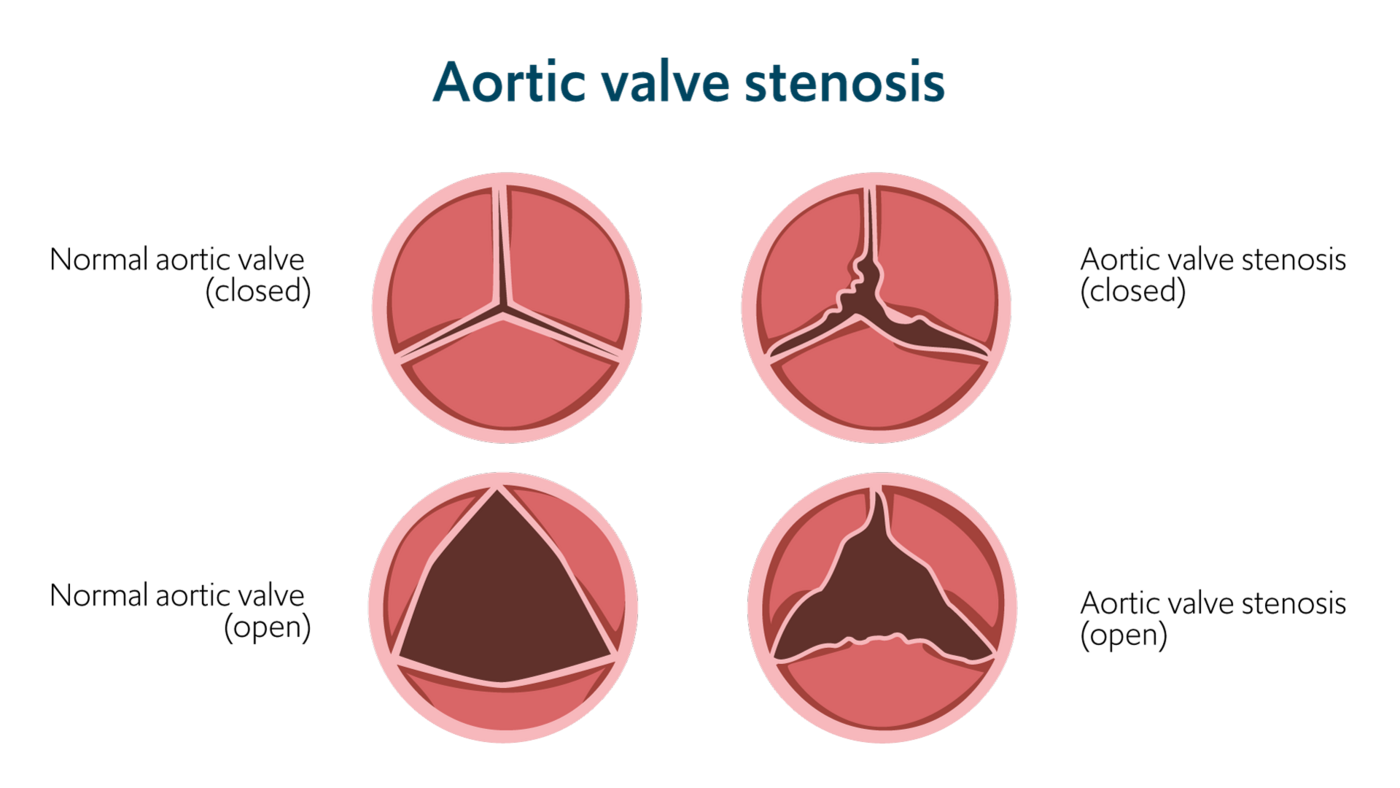
Aortic valve stenosis causes the valve to become narrowed, reducing blood flow through the heart.
Who needs heart valve repair or replacement?
Many people live with heart valve disease with no symptoms or problems. However, heart valve disease can progress to cause unpleasant symptoms, and it can lead to serious complications, including heart failure and heart rhythm abnormalities.
Your consultant may recommend valve repair or replacement if your symptoms affect your function and quality of life or if the faulty valve is at risk of damaging your heart.
How to prepare for heart valve repair
Heart valve repair is a treatment to improve the function of a faulty valve. The types of valve repair include:
- balloon valvuloplasty
- surgical valve repair
- percutaneous valve repair
Balloon valvuloplasty
Balloon valvuloplasty is a minimally invasive procedure used to open up narrowed and stenotic valves. The specialist introduces a fine, flexible tube into a blood vessel in your groin. They pass it to the heart using X-ray guidance where they then inflate the balloon to open up the valve and improve blood flow. Valvuloplasty can be a good option if the valve isn’t very narrow or you’re unwell, frail or elderly.
Surgical valve repair
This treatment involves surgery to repair a faulty valve. Repair is typically used to treat severe and symptomatic mitral regurgitation and mitral prolapse. Valve repair is open-heart surgery under general anaesthetic. The surgeon makes an incision along your breastbone or beneath your ribs to access the heart. During surgery, a bypass machine will take over the work of your heart and lungs.
The surgical repair will depend on your valve disease. The surgeon can partially stitch the valve, helping it close more effectively. They can also patch any holes, remove excess tissue and separate valve flaps that have stuck together.
Percutaneous valve repair
Percutaneous (passing through the skin) valve repair is a minimally invasive heart procedure. It is typically used to treat a floppy and leaky mitral valve.
The specialist makes a small incision over a blood vessel in your groin, neck or shoulder. They introduce a fine flexible tube, called a catheter, into the artery. They insert a clip, called the Mitraclip, into the catheter and pass it into the heart using X-ray guidance. Your consultant attaches the clip to the mitral valve to help it close properly and prevent leaking.
Heart valve replacement
Valve replacement is surgery to replace the faulty valve. In most procedures, the consultant removes the valve and replaces it with a prosthetic valve. However, an innovative minimally invasive procedure called TAVI is also available in which the consultant inserts a new valve inside your existing aortic valve.
Heart valve replacement surgery
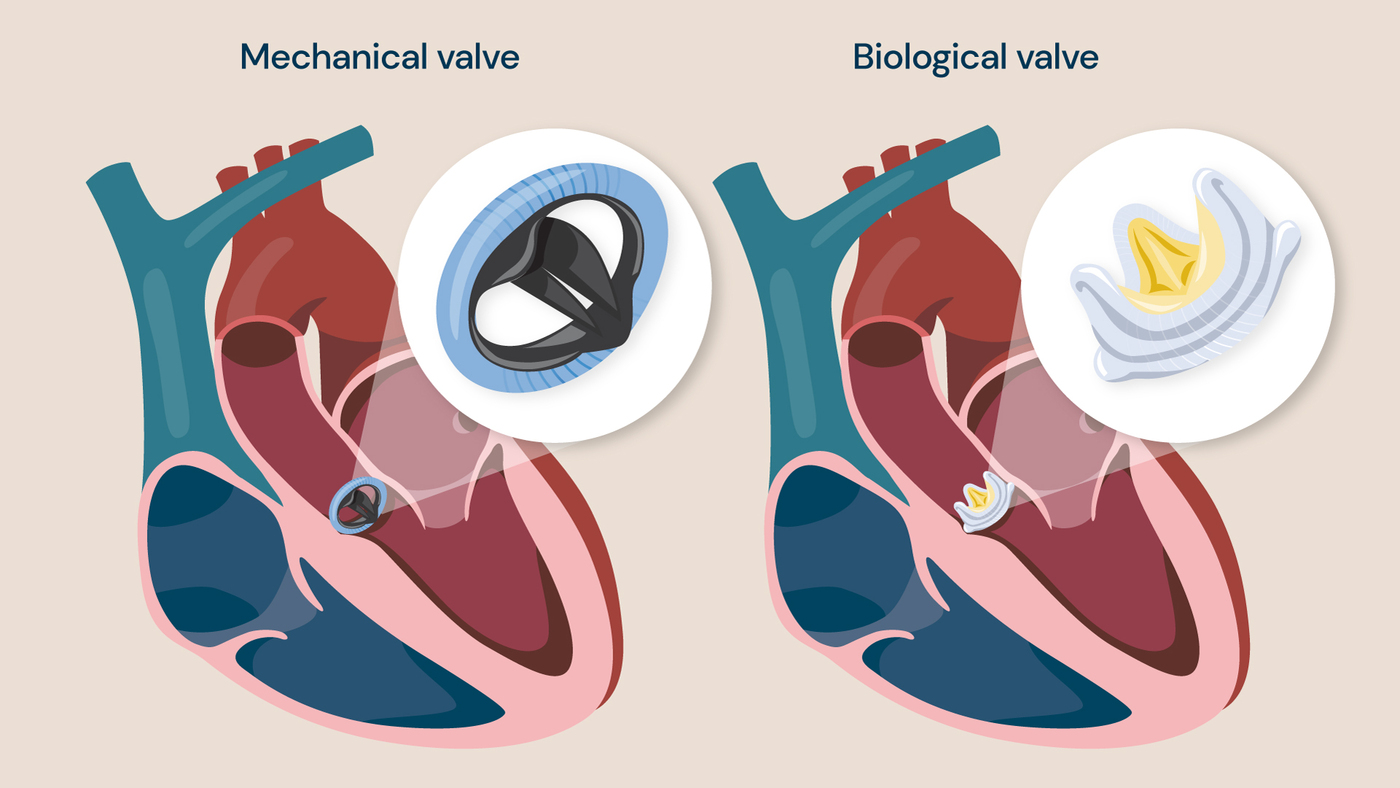
Valve replacement is open-heart surgery to replace a faulty valve with a synthetic or animal tissue prosthetic device. The cardiothoracic surgeon will operate under general anaesthetic.
The surgeon makes an incision along your breastbone to access the heart. During surgery, a bypass machine will take over the work of your heart and lungs. The surgeon will remove the damaged or diseased valve and stitch a new prosthetic valve in place.
Keyhole valve replacement surgery
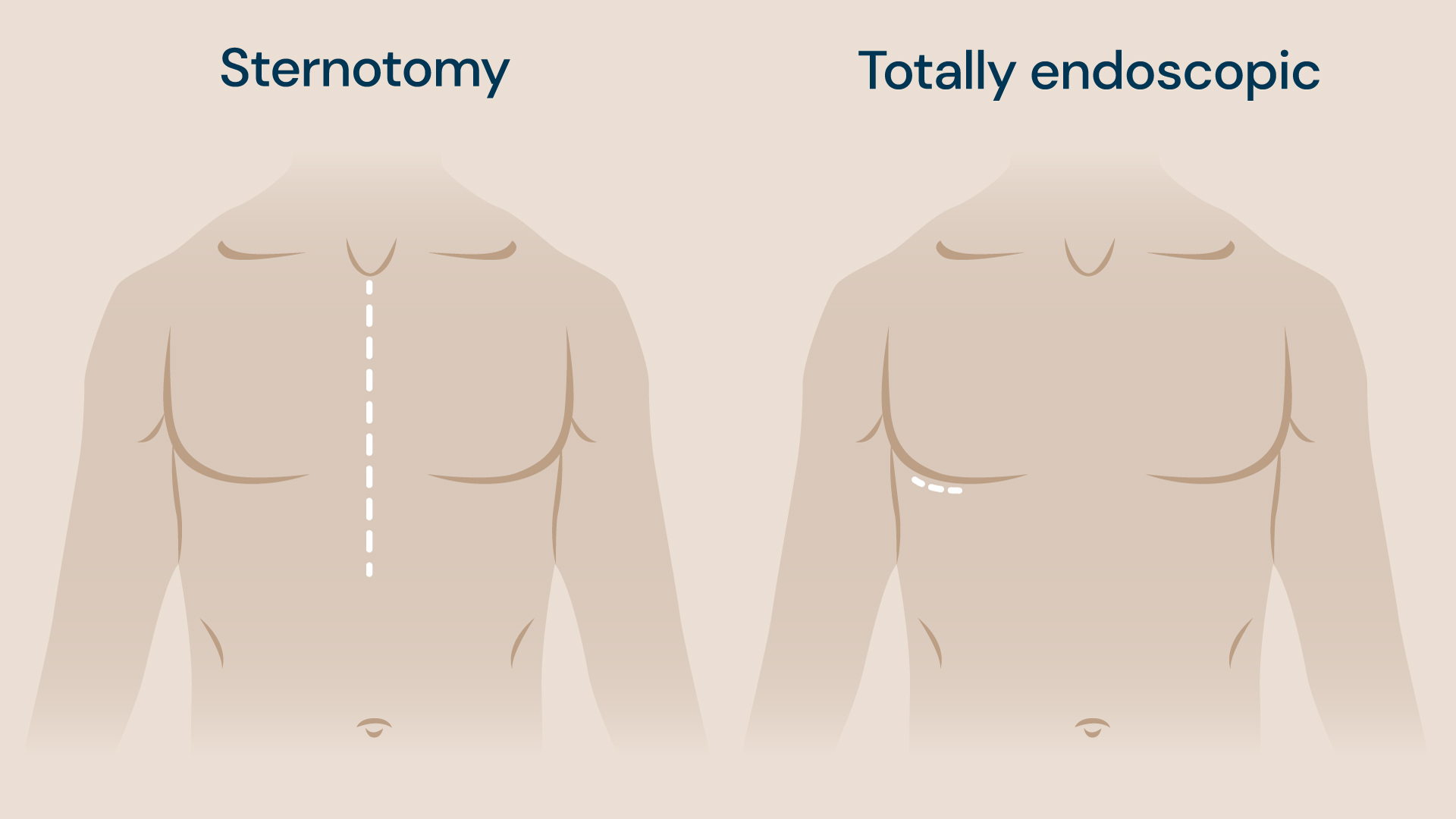
Open heart surgery versus keyhole heart surgery
Keyhole heart surgery to replace a valve is most commonly performed for mitral valve replacement. Although you will still have a general anaesthetic and a heart-lung bypass machine to take over the work of your heart and lungs, minimally invasive surgery typically results in less pain, shorter hospital stays and quicker recoveries than traditional open surgery.
The cardiothoracic surgeon makes several small incisions in the chest wall, between your ribs. They insert a tiny camera through one of the incisions, which relays pictures to a monitor. The surgeon repairs the valve using fine instruments.
Transcatheter aortic valve implantation (TAVI)
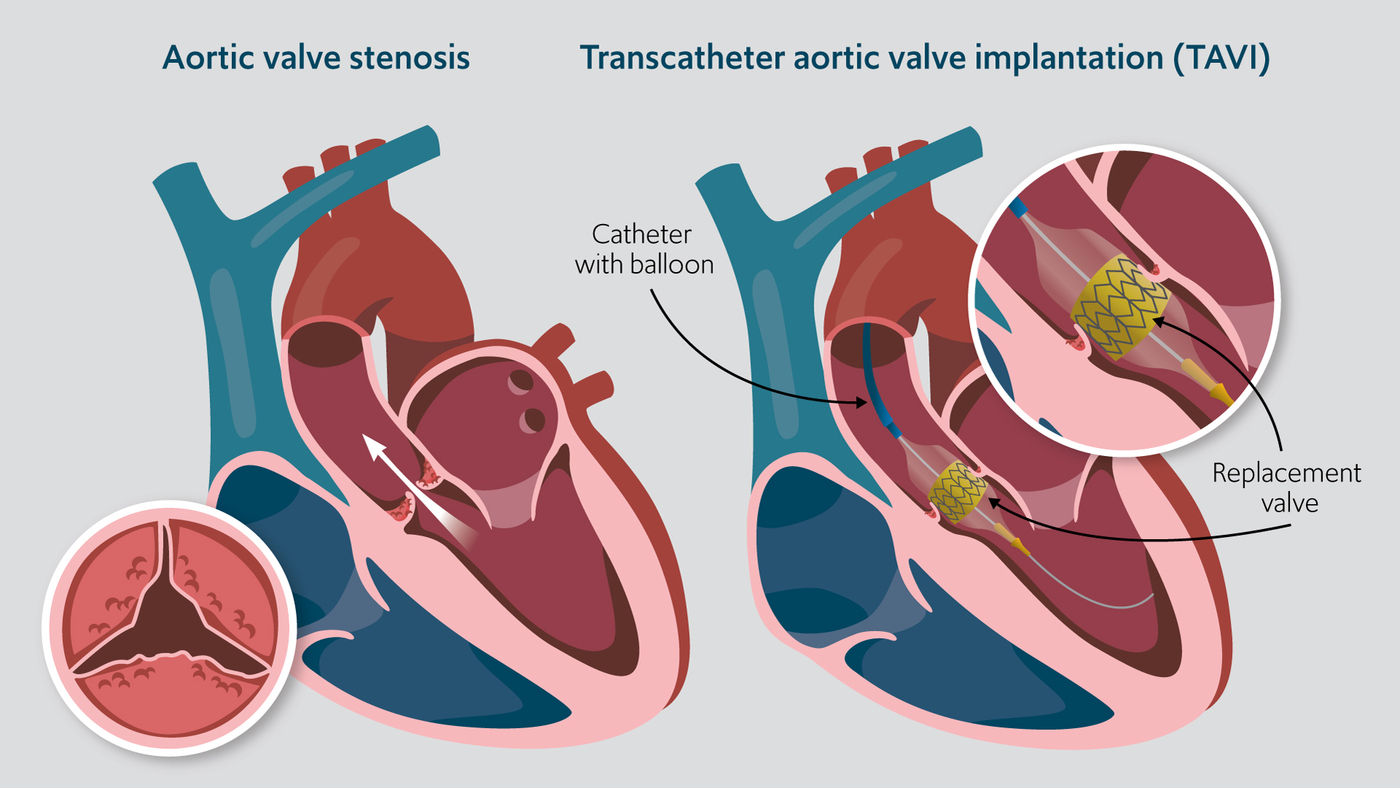
TAVI is a minimally invasive procedure use to insert a new valve without opening your chest.
TAVI is a minimally invasive procedure in which an interventional cardiologist inserts a new valve into your heart without opening the chest. It is most frequently used to treat aortic stenosis in people who are too frail or unwell for an invasive operation. In TAVI, the surgeon implants a biological valve within your existing valve. The prosthetic valve flattens the old one and takes over its function.
Risks of heart valve repair or replacement
As with any operation or cardiac procedure, there is a degree of risk in treating valvular heart disease with a valve repair or replacement.
There is a small risk of death, stroke, kidney disease, bleeding and sternal wound infection. There is also a risk of developing atrial fibrillation – a type of heart rhythm in which the heart beats quickly and irregularly.
Related services
-
Aortic valve repair and replacement
An aortic valve repair or replacement procedure treats a damaged aortic valve in your heart to enhance blood flow.
-
Cardiac MRI scan (CMR)
A cardiac magnetic resonance (CMR) scan is non-invasive and shows detailed images of your heart.
-
Diagnostic tests for heart conditions
We offer a range of diagnostic tests at our state-of-the-art facilities.
-
Electrocardiogram (ECG)
An electrocardiogram (also known as an ECG) is a test which is used to check your heart’s rhythm and electrical activity.
-
Echocardiogram
An echocardiogram – also known as an echo – is a scan that examines the heart and surrounding blood vessels.
-
Mitral valve repair and replacement
Mitral valve repair and replacement surgeries are used to fix problems with your mitral valve. Discover more about these surgeries.
-
Transcatheter aortic valve implantation (TAVI)
TAVI is a minimally invasive procedure where a new aortic valve is inserted into your heart.
-
Tricuspid valve repair and replacement
Damaged tricuspid valves are treated using either a tricuspid valve repair or replacement procedure. Discover more about these innovative treatments.
Locations
Meet our dedicated cardiac surgery specialists
Meet our team of renowned cardiac surgery specialists. From cardiovascular health assessments to innovative interventions, our specialists are committed to delivering personalised care designed just for you.
